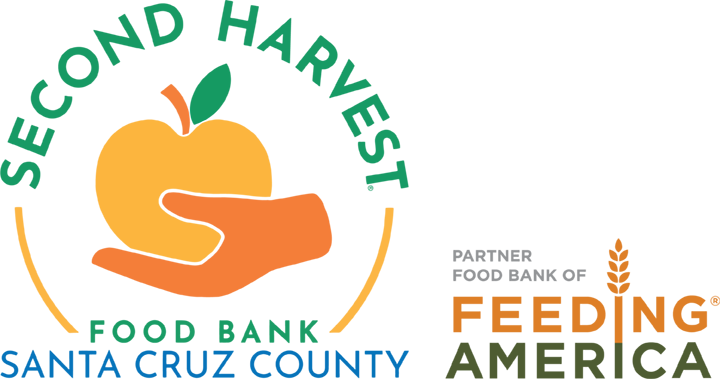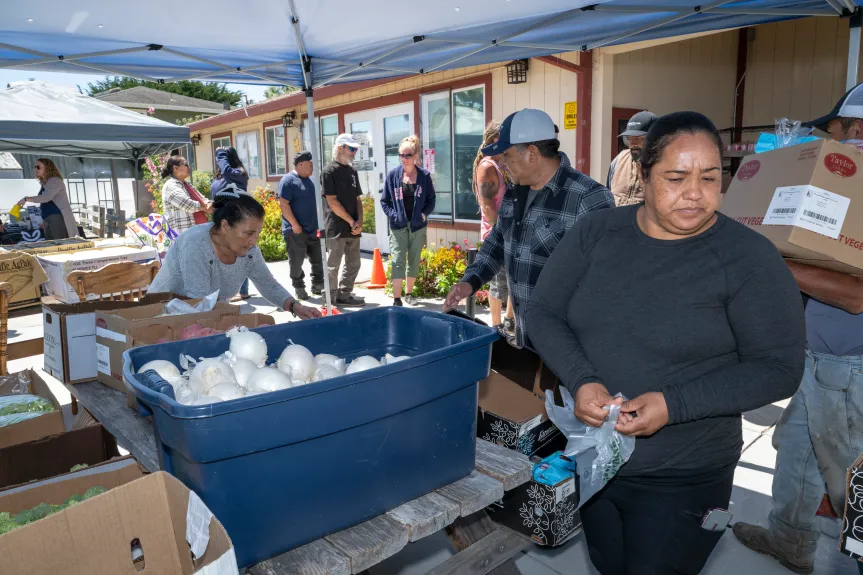Excerpt from Santa Cruz Sentinel | by Tara Fatemi Walker
For the second consecutive year, the Santa Cruz/Watsonville area was rated the most expensive metropolitan county for renters in the country, according to the National Low Income Housing Coalition’s annual report released in June. The report states an individual needs to earn a $77.96 hourly wage to afford a fair market two-bedroom rental. And this is for rent only, not including food and other basic necessities. Renters make up about 40% of the local area’s households. This means that rising housing costs are significantly impacting residents — including their ability to afford healthy food.
The Second Harvest Food Bank says it is committed more than ever to helping those who are vulnerable to food insecurity. Food Bank staff member Rosa Quezada, who serves as case specialist manager, helps the nonprofit nourish those in need through her work and through the efforts of the team that she oversees. And Quezada has noticed how increased housing costs have negatively affected the community. Case Specialist Alejandro Garcia, one of her team members, has recently seen a lot more new clients visit Second Harvest distribution sites.
“As I take their information down, they let me know that they have never been to a food distribution before — but the rising costs of everything has led them to seek resources they have not previously utilized,” says Garcia. Quezada’s team members all agree.
“Whether they are educating participants about the CalFresh program at distribution sites or assisting with CalFresh applications, many participants echo the fact that they search for ways to supplement groceries so they can stretch their budget to pay for other necessities such as rent,” says Quezada.
Not only does the Food Bank assist people in need directly by providing food at distributions, but the organization also advocates for policies that tackle the root causes of hunger. “Food insecurity is a symptom of multiple factors,” says Second Harvest CEO Erica Padilla-Chavez. “When hardworking families struggle to pay rent or a mortgage, cutting corners on food and the quality therein is often the first recourse for our neighbors.”
Local resident Martha Ramirez and her family, a husband and four kids, have struggled in recent times due to higher rent and higher food prices. “Everything is so expensive. Sometimes I don’t even sleep, thinking about everything I have to pay,” she says. “It’s a lot, how much they’ve raised the cost of living, sometimes it causes problems in personal relationships because the economic situation affects these too.”
When she can find work, Ramirez cleans people’s houses. But as inflation has gone up, her customer base has dwindled. To help make ends meet, she goes to Second Harvest distributions three times every week and also volunteers. “I get food and can help out friends at the distribution. They give me beans, rice, potatoes, and vegetables like carrots, that I don’t have to buy.” She has volunteered for about 20 years. “I do this also to help my husband with the cost of food; it helps me to not have another thing to stress about.”
Food Bank client and volunteer Paty Jimenez used to work as a crew leader in berry fields, but she hurt her knee and can’t work. “The price of rent is so high now, and the prices of everything have increased. My husband is in charge of the bills and it’s a lot for just him,” she says.
Jimenez said she appreciates the fact that at Second Harvest distributions, “it’s really healthy food, I’ve gotten to learn how to cook different healthy foods too.” She volunteers at four distributions each week and because of receiving food considers her service a source of income.
The Food Bank recognizes that rising housing costs directly contribute to food insecurity. As households spend more of their income on rent, they have less for their basic needs including the ability to buy enough food.
In addition to healthy food, the Food Bank brings SNAP/CalFresh education and assistance to select food distributions. “California has one of the lowest rates of CalFresh participation in the country,” says Quezada. “We strive to make a difference by assisting those who qualify for CalFresh to enroll. There are almost 2 million Californians that are not receiving these nutrition benefits that are potentially available to them. We help people with applications, and if needed, will advocate for them at the county level.”
There are additional benefits to being enrolled in CalFresh — such as discounts on necessities like phones and/or phone service, utilities and internet. “They can get a discounted Amazon Prime account, or a Walmart+ Assist membership at a lower price,” says Quezada. “We believe everyone should be able to enjoy services like these regardless of age or socioeconomic status.”
A U.S. Department of Agriculture report released last October stated that in 2022, the number of people living in food insecure households in the U.S. increased to 44 million, including 13 million children. There were several disturbing trends: an increase of 44% for children from the previous year, the highest rate and highest number of individuals and children since 2014, and the largest one-year increase in food insecurity since 2008.
As housing costs increase, Second Harvest says it remains committed to the health and well-being of all Santa Cruz County residents. “Times are rough for many people regardless of where you live, how you look, or even how you dress,” says Quezada. “Hunger isn’t limited to one specific person such as unhoused individuals or even unemployed individuals. Anyone in our county can experience food insecurity. Hunger does not know race, background or even what ZIP code you live in.” The Food Bank encourages people in need to utilize its services. “Don’t be afraid to seek assistance for fear of social stigma and judgment of asking for help in your time of need,” says Quezada. “We aim to help our neighbors get the food and resources they need to thrive.”

